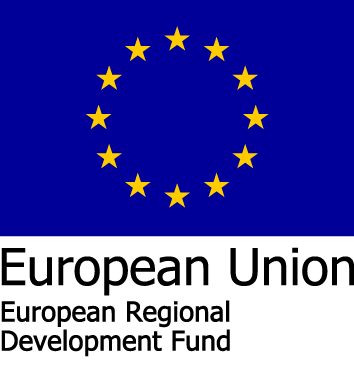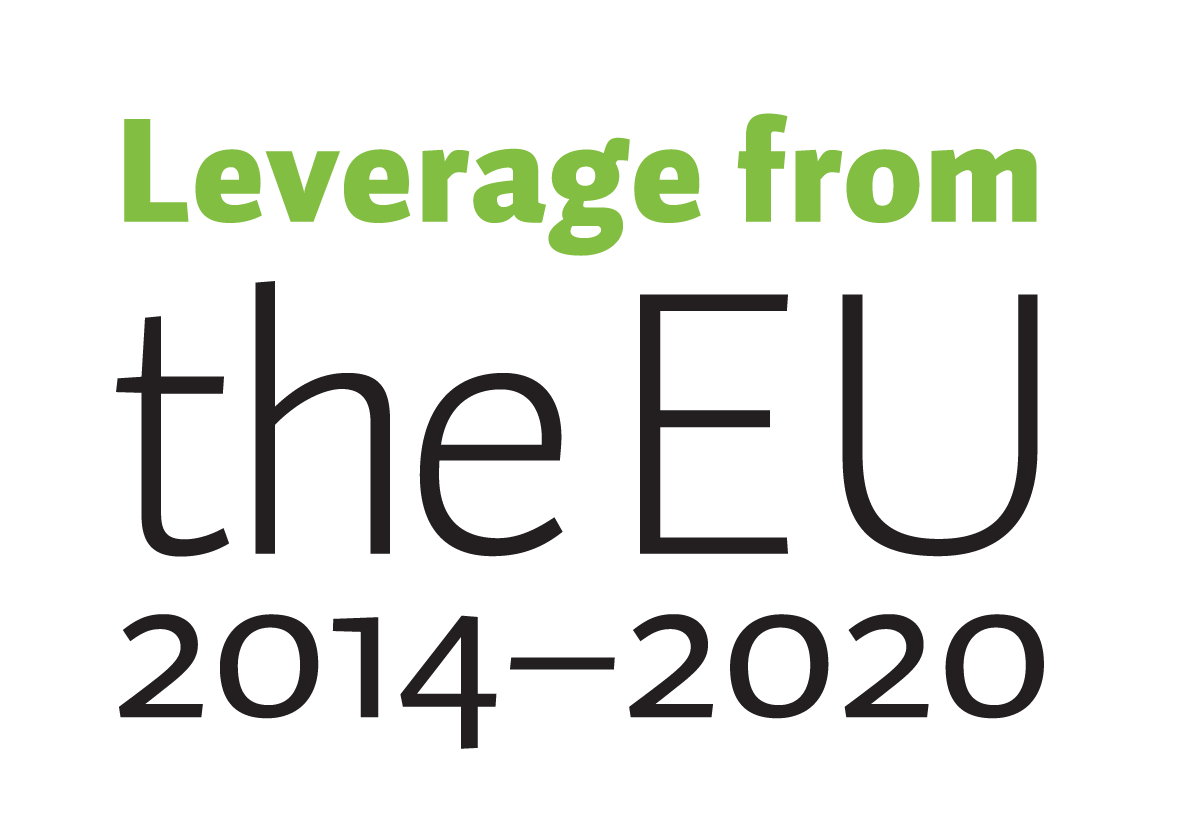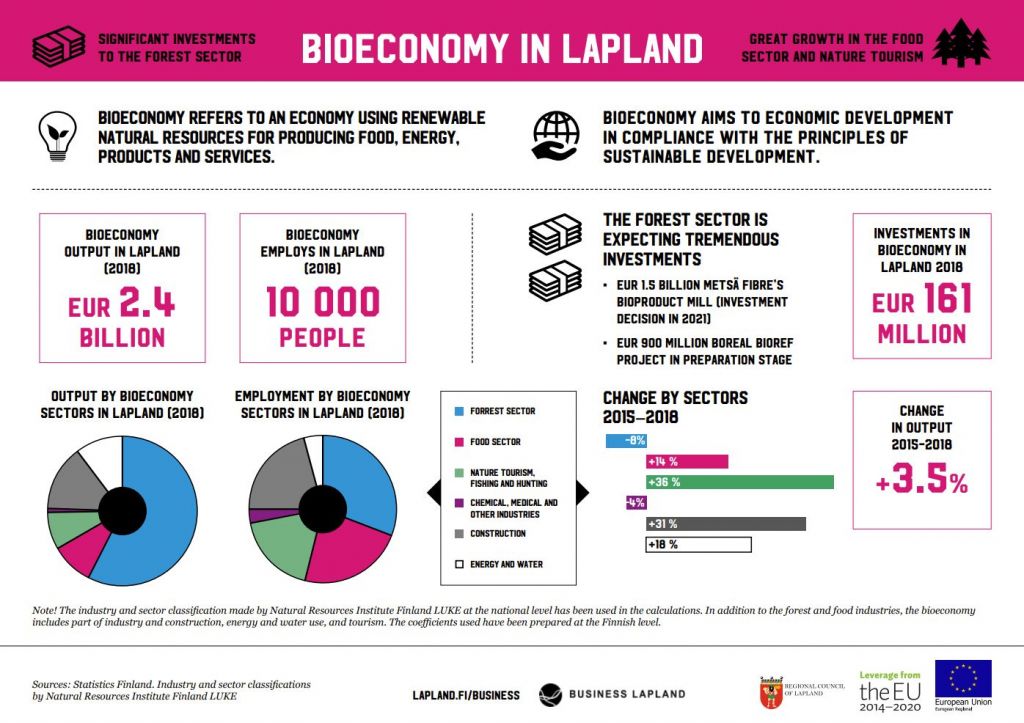Bioeconomy is based on the sustainable use of renewable natural resources and it is a significant business sector in Lapland.
Lapland’s nature offers pure raw materials for the bioeconomy and enables services that utilize the natural environment, such as nature tourism.
In 2018, the combined output of the bioeconomy sectors in Lapland was EUR 2.4 billion and it employed 10,000 people. More than half of the output came from the forest sector, followed by bioeconomy-related construction, food sector and nature tourism.
During 2015–2018 nature tourism has recorded the biggest growth figures in the bioeconomy sector in Lapland, and in the same period, the output of the forest sector has slightly decreased.
In the coming years, large investments are expected in the bioeconomy in Lapland, the most significant being the planned bioproduct factory in Kemi.
The infographic is based on statistics from Statistics Finland, and the industry and sector classification made by the Natural Resources Center of Finland (LUKE) has been used in the calculations. In addition to the forest and food industries, the bioeconomy includes part of industry and construction, use of energy and water, and part of tourism. The industry coefficients used have been prepared at the national level.



